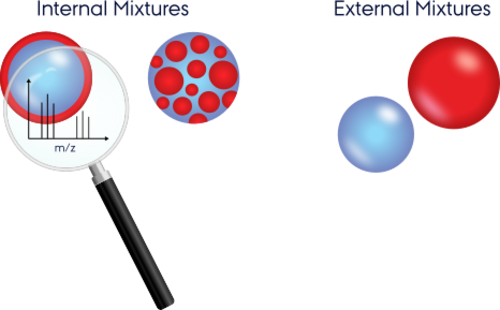
Atmospheric aerosol particles often have a complex chemical composition and mixing state. Knowledge of these properties on a single-particle level is critical to develop a fundamental understanding of their ability to act as ice nucleation particles (INPs), as only 1 in about 106 atmospheric particles is an INP. Single-particle mass spectrometers (SPMS) provide a powerful way to measure the chemical composition of individual aerosols. In combination with instruments that simulate ice crystal nucleation, SPMS can be used to explore the composition of ice residuals (IRs), the particle remaining after ice crystal sublimation. By comparing the composition and mixing state of IRs to that of the other particles in the population that did not form ice crystals, the chemical properties of INPs can be explored.
In our group, we use a commercial SPMS to study the composition and mixing state of individual aerosol particles. In combination with our cloud simulating chambers, our goal is to elucidate the chemical composition of particles that act as INP or cloud condensation nuclei and to understand the impact of cloud processing, i.e. the involvement of particles into cloud microphysical processes, on their properties.